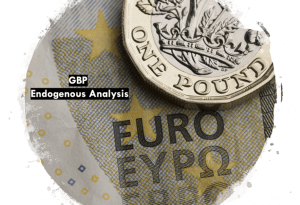The factor that has the greatest influence on the Forex foreign exchange market is the changes in interest rates made by any of the 8 major central banks worldwide. These variations usually respond indirectly to other economic indicators released through the month and have the power to move the market significantly immediately, and with great force. Because surprise changes in interest rates usually have the greatest impact on this market, understanding how to predict and react to these volatile movements can lead to faster responses and higher levels of profit.
Fundamentals of Interest Rates
Interest rates are crucial for traders trading on the Forex market (especially for day traders) for one simple reason: the higher the rate of return, the higher the interest earned on the currency in which it has been invested and the higher the profit.
Of course, the greatest risk to this strategy (known as carry trading) is fluctuations in the price of currencies, which can dramatically counteract any profit derived from the interests of the currencies in which it has been invested and cause losses in positions. It is worth noting that while the investor will always want to buy the currencies with the highest interest rate (buying them with the lowest interest rate currencies), it is not always a smart decision. If trading on the Forex market were so simple, anyone with this knowledge could earn money on a constant basis, which is not the case.
This does not mean that investing in currencies to get money with interest rates is too complex for the average investor; what we want to imply is that it is a form of investment that must be made with care, especially considering that it is based on fundamental economic news that does not always produce the expected result.
How are Interest Rates Calculated?
Each board of directors of central banks controls their country’s monetary policy and the short-term interest rate at which banks have the opportunity to borrow money from other banking institutions. Typically, central banks raise interest rates in order to curb inflation or reduce them to stimulate borrowing of money and inject more capital into the economy. The latter is because in periods when interest rates are low, companies and individuals are more inclined to borrow money from banks as they have to pay less each month to repay the debt.
Generally, the investor can have a general idea about what the bank will decide, by analysing the most relevant economic indicators, such as:
- Consumer Price Index (CPI).
- Employment levels.
- Housing market.
- Level of consumer expenditure
- Subprime mortgage market (subprime market).
- Forecast of central bank interest rates
Based on the data from the indicators mentioned above, a trader can obtain an estimate for a possible change in the interest rate of a central bank such as the FED (Federal Reserve). Usually, if these indicators show better results, this means that the country’s economy is on the right track and therefore it is necessary to either raise interest rates or keep them the same. In the same way, a significant drop in these indicators can mean that it is necessary to lower interest rates to stimulate money lending (indebtedness).
Apart from economic indicators, it is possible to predict a decision concerning interest rates by:
- Analysis of predictions.
- Monitoring and analysis of economic announcements by central banks and/or other high-ranking authorities and agencies related to the country’s economy.
Major Economic Announcements
Important announcements by central bank bosses usually play a vital role in interest rate changes but are usually overlooked in response to economic indicators. Of course, this does not mean that they should be ignored. Each time the board of directors of one of the top 8 central banks makes a scheduled public statement, it usually gives an idea of how the bank views the inflation situation in the country.
In July 2008, the Chairman of the Federal Reserve, Mr. Bernanke testified on monetary policy before the House Committee. In a normal session, Bernanke reads a prepared statement about the value of the US dollar and answers questions from committee members. This meeting was no exception. In his statement and responses, Bernanke flatly stated that the dollar was good for the time being and that the government was determined to stabilize it even though fears of a recession were influencing all other markets.
The 10 am session was closely followed by traders, and because it was positive, a significant increase in interest rates by the Federal Reserve was anticipated, which led to a sharp rise in the short-term dollar in preparation for the next US interest rate decision.
This caused a fall of 44 pips in the EUR/USD in the time of 1 hour (that is to say, the dollar rose with respect to the euro). If a trader had opened a short position in the EUR/USD with a volume of 1 standard lot (100,000 base currency units), it would have made a profit of $440 for that movement in the market.
Analysis of Predictions
The second way to predict decisions regarding interest rates is through the analysis of predictions. Because changes in interest rates are usually well anticipated, banks, brokers, and professional traders usually have a consensus about the estimate of the possible change in the interest rate before the announcement occurs. And it is for this reason that it is recommended that the trader analyze 4 or 5 of these forecasts (which must be numerically close) and average them in order to obtain a more accurate prediction.
What to do when there is a surprise change in an interest rate?
No matter how good a trader is as a researcher or how many numbers he has analyzed before the announcement of a decision related to a country’s interest rates, central banks can make surprise decisions and bring down all predictions with a rise or fall in the interest rate.
When this happens, the trader must know in which direction the market will move. If there is an increase in the interest rate, the currency will appreciate, which means that investors will start buying it. If the central bank lowers the interest rate, traders will probably start selling the currency and buying currencies with higher interest rates. Once the trader has determined the most likely address, he must do the following:
Act quickly! In these periods, when a surprise occurs, the market moves very quickly, as the vast majority of traders try to buy or sell (depending on whether there was an increase or reduction in the interest rate) as soon as possible to overtake other market participants, which can generate a profit means if done correctly.
Be very careful about a possible reversal movement of the high volatility trend. The perception of the trader tends to dominate the market shortly after the announcement on the interest rate is released, however, over time the logic comes back into play and impose itself, which can cause the trend to move back in the same direction as it did before the announcement, especially if there are other fundamental factors involved that move the price of the currency in that direction. It should be remembered that the exchange rate of currencies is not determined solely by interest rates; there are also other key factors that are of the utmost importance in the long term.
Real-Life Examples
In July 2008, the Bank of New Zealand had an interest rate of 8.25%, one of the highest in the world. The NZD/USD exchange rate remained on the rise for a period of several months because NZD was a currency that investors were buying in large quantities because of the high rates of return it offered compared to other currencies with lower interest rates.
In July, against all odds, the board of directors of the Bank of New Zealand lowered the interest rate to 8% during its monthly meeting. While this 0.25% cut may seem small, Forex traders took it as a sign that there was fear in the central bank of a possible increase in inflation, and immediately began to withdraw their funds, or sold the currency (NZD) and bought others – even if these other currencies had lower interest rates.
In this case, the price of NZD/USD fell from 0.7497 to 0.7414, a total of 83 pips, in the course of 5 to 10 minutes. A trader who had sold only one lot of this currency pair would have made a net profit of $833 in just a few minutes.
However, not long after this fall, NZD/USD began to regain lost ground and continued the previous general trend, which was bullish. The reason the price did not continue to fall was that despite the cut in the interest rate, the NZD still had a higher interest rate (8%) than most other currencies.
As a separate note, it is important to carefully read and analyze press releases in which the central bank has announced a change in interest rates (after determining if there has been a surprise change), as they help to understand the bank’s view of future interest rate decisions. The information in these advertisements usually induces a new trend in the currency after the short-term effects occur.
Conclusion
The monitoring of news and the analysis of the shares of the central banks should be a high priority for any trader operating in the Forex market. This is because the decisions of central banks directly affect the monetary policies of countries, so they tend to cause strong movements in the foreign exchange market, mainly in the exchange rates of the currency pairs that include these currencies. As the market moves, traders have the ability to maximize their profits, not only through the interest earned through carry trading, but also through strong price fluctuations in the market.
Careful research and analysis can help the trader avoid unexpected changes in interest rates and react appropriately to them when they inevitably occur.





